Interview with Jessica DeBari, Director of Creative Spaces at Mount Sequoyah
Jessica DeBari is a native of Fort Smith, Arkansas. After studying art in Italy while earning her MFA through American University in Washington, DC, she built a career in arts management and creative place making in New York City. These skills were just what Mount Sequoyah in Fayetteville was looking for to head Creative Spaces NWA, a living art space, where artists from all fields can find support and community. Oh, and by the way, Jessica is also an acclaimed portrait painter.
AAS: Jessica, tell me about yourself. Are you a native Arkansan?
JD: Yes, I grew up in Fort Smith. I was surrounded by creativity growing up. My mom taught art classes with some other area painters, and although my dad’s job was contract cleaning for UPS, he spent all of his free time playing guitar and writing songs. My mom taught me to do finish and mural work from an early age, so I started taking finish and mural gigs in high school. I always painted, but I took it for granted as just a part of life. I thought I would end up being a lawyer based on my strengths in school, and I went to Hendrix with a scholarship intending to go down that path, but a new director for the arts program at Hendrix was so enthusiastic about my painting, it shifted my focus. It slowly dawned on me that painting was more tied to my future than anything else. After graduating, I painted for a year, and fortunately got into the MFA program at American University in Italy. Moving to Italy definitely changed my life. I lived in Corciano and Rome while in the program. I loved the immersive environment, living and working closely with the artist community while experiencing the world in the slower lens that pedestrian life there allows.
After finishing my degree in DC, my husband and I moved to New York City. There is nothing quite like the energy and inspiration NYC has to offer. I maintained a studio while there and got a scholarship to join the Salmagundi Club, the oldest painters club in the US, but my daily work was in the decorative arts, antiques, and interior design. Many of our artist friends from school ended up in the city too, so we had a good core group of support to keep up our work and connections in the arts. However, having little children in the city is not easy, so when we found we were expecting a second child we decided to make the move to Arkansas.
AAS: So, what brought you to Creative Spaces at Mount Sequoyah?
JD: A unique professional journey through trades, arts management, community organizing, and planning spaces brought me here. Hearing the drive and passion of my peers in graduate school (while painting their portraits) I found myself moving toward a purpose driven path built out of the desire to create opportunities for the diverse and talented people that surrounded me. I started out managing a decorative painting studio in Washington DC and continued in decorative arts and design in New York for many years. I created connections between the artists I knew and design clients. During this time, I found that I had a knack for managing large-scale installations and projects. After deciding to move to Fayetteville to be close to family, I met many creatives who said they lacked community. They needed a place to share work and connect. When Mount Sequoyah opened up their spaces in Sequoyah Hall as studios, I already had a list of local artists in my head who I knew were waiting for just such a community of studios. I started in the summer of 2019, and all of the spaces filled in the first month.
AAS: Besides studio space, which is so important, what else does Creative Spaces offer artists.
Jody Travis Thompson’s Greetings From Mount Sequoyah mural
JC: It is definitely more than just studio spaces. It is a community and we actively try to provide opportunities for artists on the mountain to share work. We facilitate workshops, classes, exhibitions, residencies, and more. The program has grown to encompass 50 artists in studios, partnerships with Fenix Arts, Open Mouth Literary, Afrique Aya, Ozark Ballet Theater, Trike Theatre, an afterschool arts program (FYRE), the Music on the Mountain music series, the Chamber Music on the Mountain residency and festival, the CAFÉ NOVICE culinary writing residency, and more!! We have been very busy. Last year we also started installing public art on our grounds as a way of inviting the community into our creative world. One of our artists, Jody Travis Thompson, created a fantastic “Greetings From Mount Sequoyah” mural, Ziba Rajabi created a beautiful outdoor fabric hanging piece called “Dogwoods and Birds” and Eugene Sargent created a massive sculpture called “Wedding Arch” near the overlook.
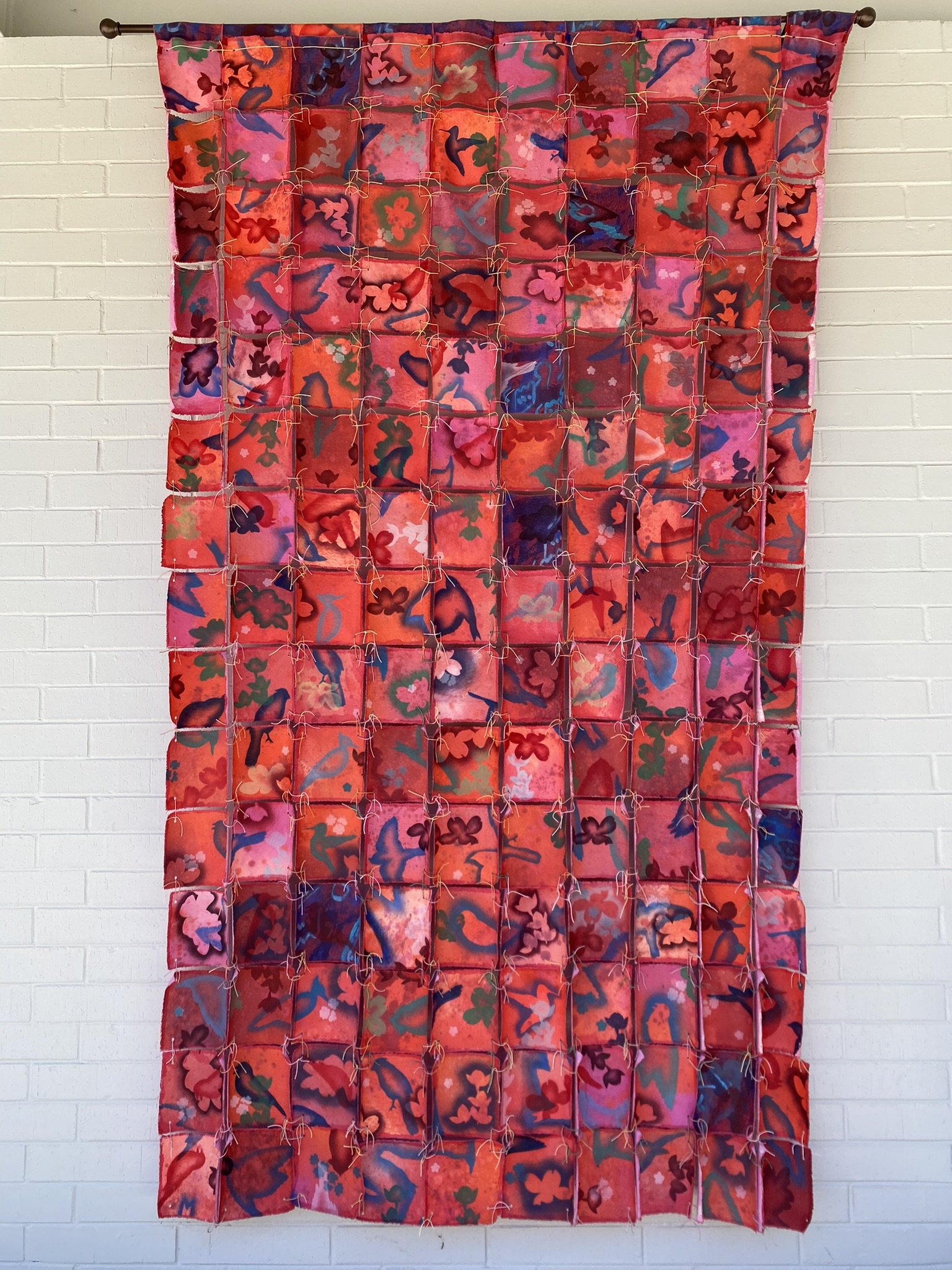
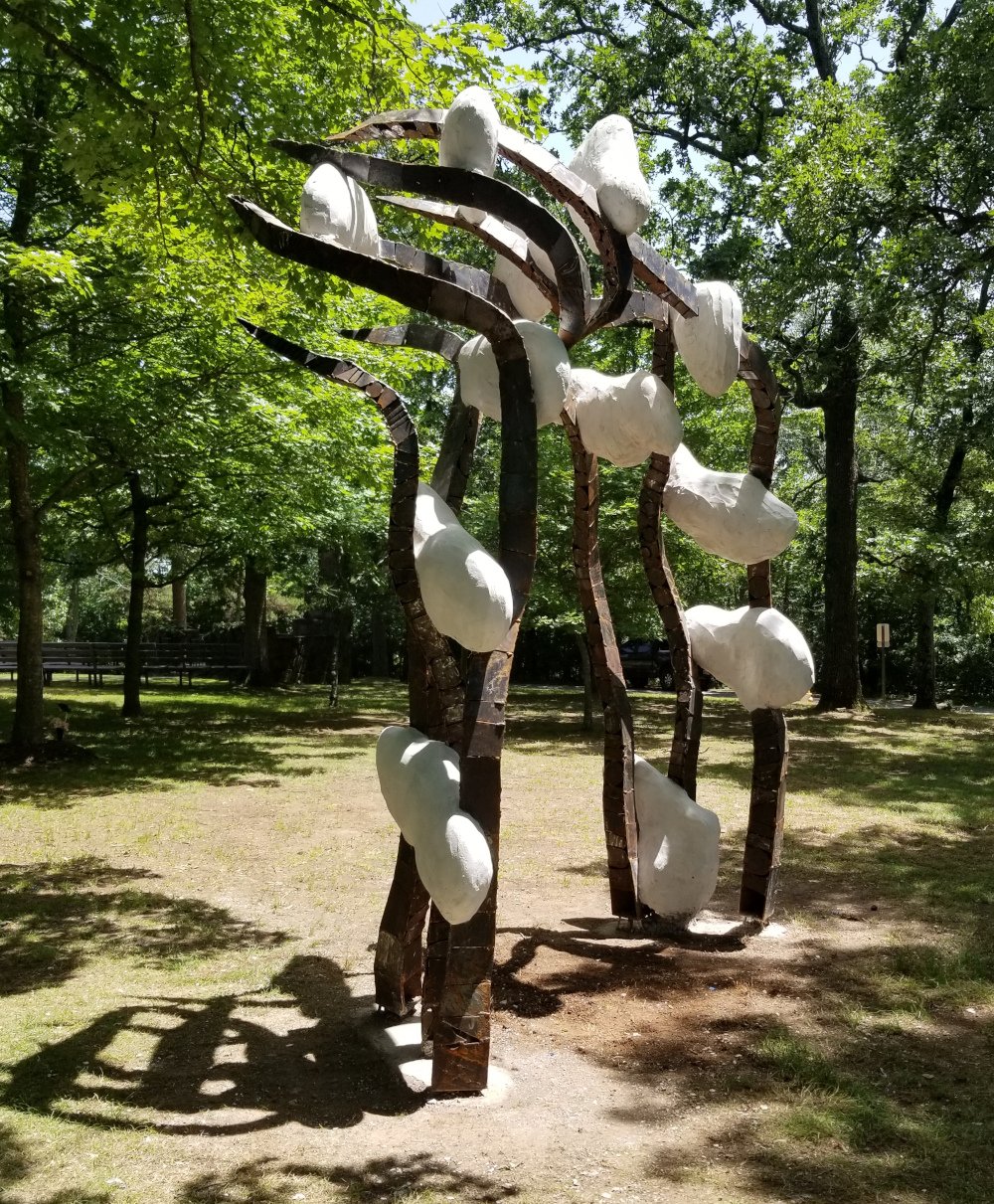
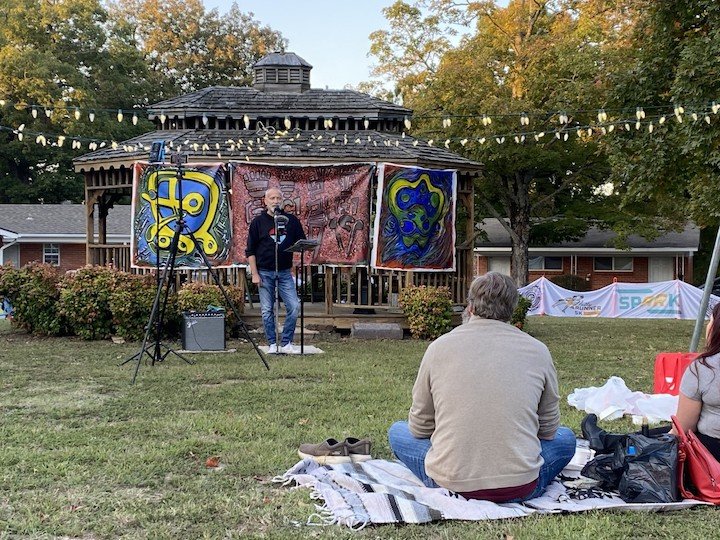
AAS: Tell me more about the Artist Residency program.
JD: We have hosted a number of exciting residencies over the past few years, welcoming artists with The Momentary, The University of Arkansas, Chamber Music on the Mountain, BodySonnet and more to create unique programming, exhibits, and workshops while enjoying the peace and focus the mountain provides. The 100-year-old canopy of trees, beautiful views, and tranquil spaces the mountain has to offer bring a unique sense of peace and joy in creating. We have a variety of lodging spaces that work well for groups hoping to really dig in and work together, such as Yancy Lodge (10 to 12), Young Lodge (3-8), or even Parker Hall (up to 50) for large groups. Open Mouth Literary Series has established a monthly writer’s residency in Sequoyah Hall, providing quiet space to a different writer each month to focus on their work. We have a number of conversations in the works for this summer including a potential dance camp with Ozark Ballet Theater. Mount Sequoyah was designed as a retreat, so it really is a perfect place to plan a residency, with lodging (private or group), performance space (auditoriums and exhibition space), and recreation (pool/tennis/hiking) all in one!
AAS: How have the programs at Creative Spaces evolved over the years?
JD: Mount Sequoyah has been an arts and education hub modeled on the Chautauqua Institute since its founding in 1922. This site has hosted playwright retreats, songwriting workshops, music festivals, and more throughout its 100-year history. This type of programming dwindled during the latter half of the 20th century. My experience at the actual Chautauqua in New York, has shaped my drive for expanding Creative Spaces programming toward that aspirational early 1900's model of bringing all of the arts together. In three years, this program, focused on intentional support of the creative community, has grown dramatically from two resident artists’ studios to over 50, two gallery spaces, and many regional arts partners like Fenix Arts, Afrique Aya, Ozark Ballet Theater, Trike Theatre, and others. We revived the Music on the Mountain program during the pandemic with outdoor concerts, and it has become a pillar of our creative programming at this point. We started the Chamber Music on the Mountain residency and festival in 2020 and are actively planning the third annual 2-week program right now. We facilitate arts education workshops, exhibitions, and events for our community of artists throughout the year. We have also started a Clay studio this year!



AAS: Several artists I’ve interviewed use or have used Creative Spaces. What is the process for applying?
JD: We have an application form that can be accessed on the www.creativespacesnwa.org website, under “available studios.” We have a standing waitlist, but often we don’t have a space that exactly fits the needs of an applicant, so people can move up the list relatively quickly depending on the type of space they need. Many of the artists on the mountain are there because of word of mouth though! People have come to know us for our studio spaces and the wonderful artist’s community on the mountain.
AAS: How is Creative spaces supported financially?
JD: Currently, Mount Sequoyah Center subsidizes artist studio costs through revenue earned through event spaces and overnight lodging reservations. This means that if you book a party here or tell your family to stay at Mount Sequoyah when they come visit, that directly helps to support our artist community. We have been fortunate to receive funding for much of our programming initiatives in the past few years. For example, The Windgate Foundation has helped with our Clay Studio, and Walmart.org has supported the FYRE after school arts program and the AMMPLIFY program. Despite these successes, there are still a number of areas in which we need funding. The greatest opportunity for improvement at this time is the fourth floor of the Sequoyah Hall building. Sequoyah Hall is the main arts building that is home to 30 artist studios and Mount Sequoyah's gallery space, but the fourth floor remains unoccupied due to the lack of funding needed to renovate it to meet city codes and ADA accessibility requirements. This 1920s building is a beautiful historic gem, and the top floor is the highest point in Fayetteville. Restoring the windows in this historic "rooftop garden" would be a crowning achievement for the organization. We are also seeking support in the community for our residency program. This is a wonderful direct way that an individual donor can create a positive growth experience for an artist or writer. If anyone is interested in supporting Creative Spaces, they can go here: Mount Sequoyah Center - Creative Spaces at Mount Sequoyah (networkforgood.com) Or if they would like to create a fellowship for our residency program, you can start that process at this link: artsresidency — Creative Spaces (creativespacesnwa.org).
AAS: You are a practicing artist also. What motivates your personal work?
JD: Connecting to others is the primary motivation of my work. When I do a session with someone, often the key moments in that person's life that shaped their identity are illuminated. I have many painting heroes, but Alice Neel most accurately summed up my experience of portraiture when she said "Like Chekhov, I am a collector of souls... if I hadn't been an artist, I could have been a psychiatrist.” The story revealed during the painting is the secret to a portrait's success, not the skill of the painter. The connection between the painter and the subject, and the conversation that passes in that time together forms the work. Almost every time someone sits for me, they nervously proclaim, "I don't know if I can be still enough;" because most people's preconceived notion of a portrait session is that of being a pained, frozen mannequin. In reality, a successful portrait usually results from a beautiful vulnerable encounter, a long conversation meandering a lifetime, which results in an imprint, a reflection of a life. I value the skill I have built over a lifetime to capture these stories, but my goal in creating a visual piece is almost never the treasure, it is an artifact of the real prize, being given the privilege of carrying another person's story. Revealing this secret has come to define my portraiture career.
AAS: I really like your style of portraiture. It is direct but not too revealing. They are portraits that make you want to meet these people. Riley is one of my favorites. Is there a story behind it?
Riley, 12” x 10”, oil on board
JD: Riley is my 1st cousin and has always felt like a little brother to me. I have painted him at least a half dozen times over the years, and each time I have felt that he was totally present while sitting together. He is a deep thinker, into meditation, and currently pursuing a doctorate in Psychological Science. He is a person that is very comfortable with talking one on one. This particular painting made me a bit emotional, because it is the first time I have painted him and recognized a bit of my Uncle’s face in him; my uncle passed away when we were kids.
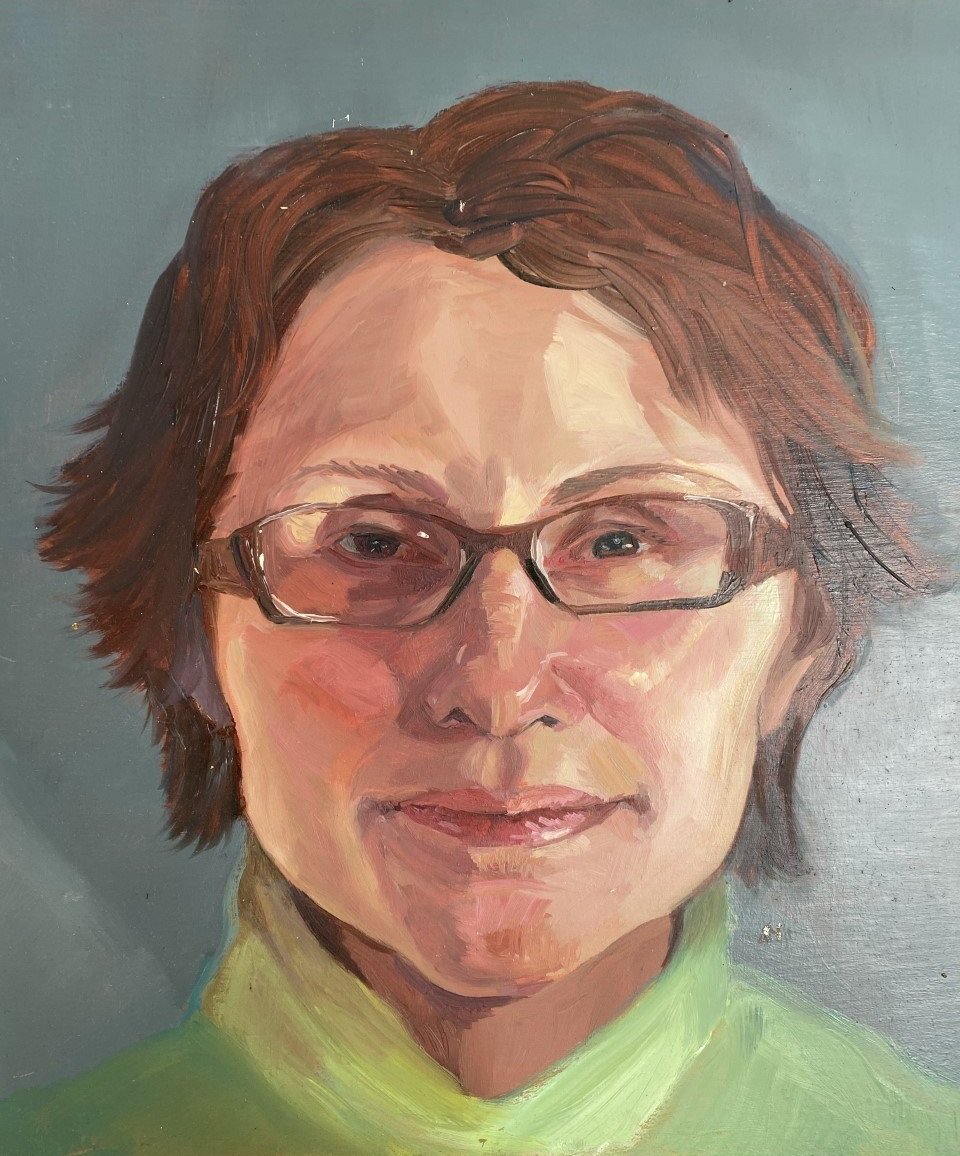
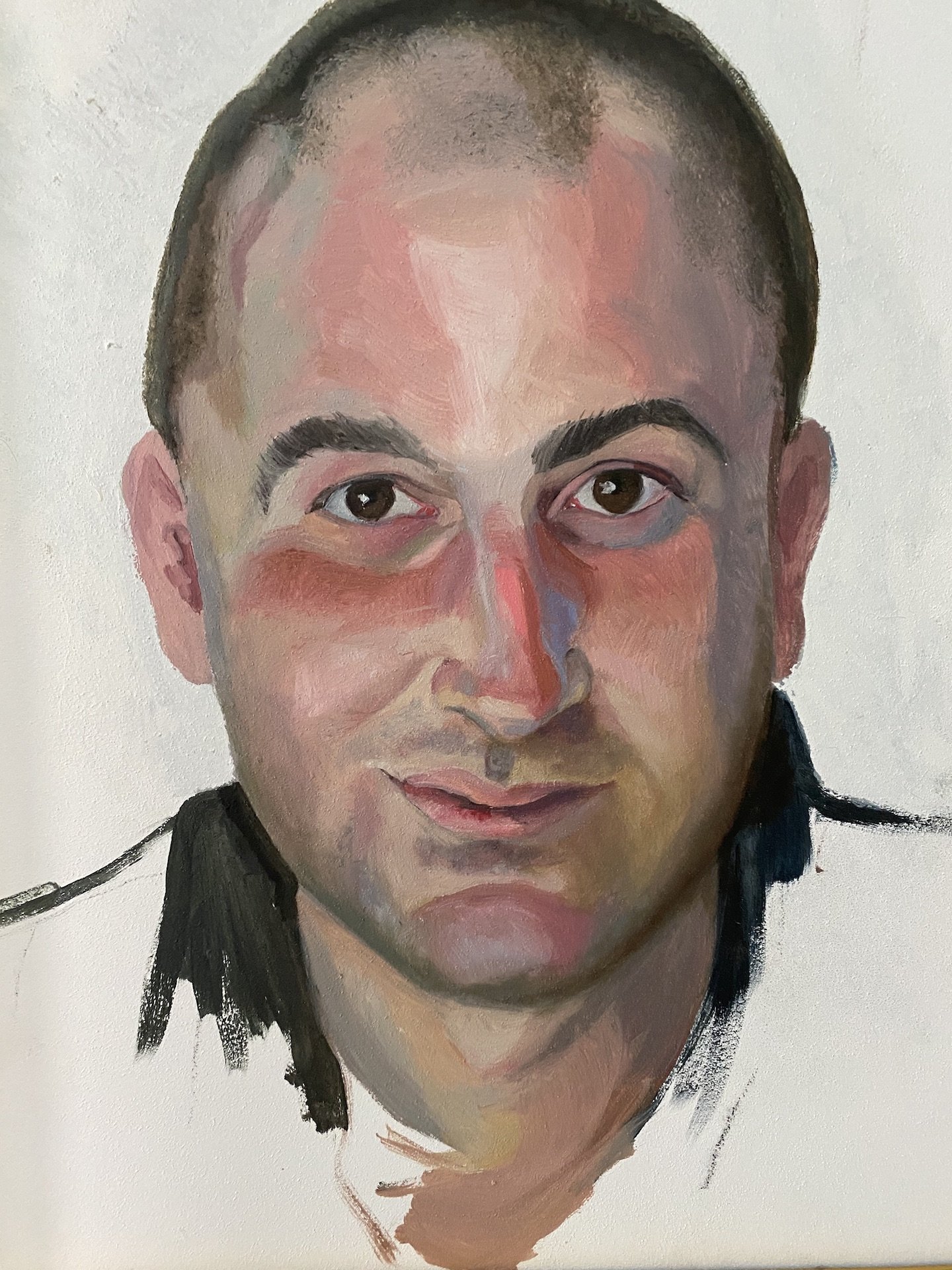
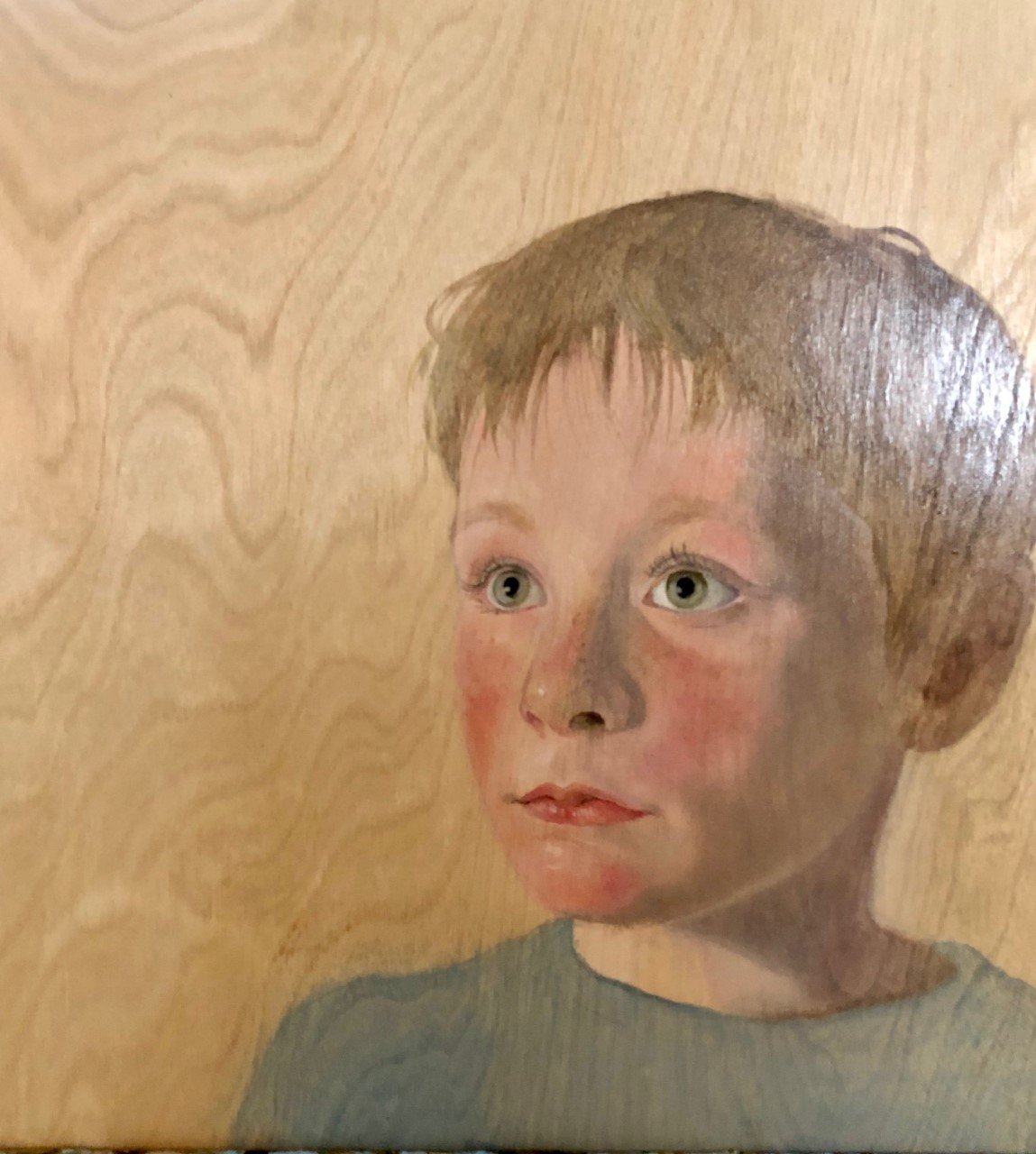
AAS: What do you see on the horizon for Creative Spaces?
JD: I could not be more excited about what I see on the horizon for Creative Spaces. We installed several public art pieces last year, and I believe we are moving toward becoming an important arts destination in Northwest Arkansas. There is so much going on at Creative Spaces that our website, www.creativespacesnwa.org has grown to include 19 separate sections. We have become known as a safe haven for the creative community, and that community has brought a beautiful amount of kinetic energy to the mountain. Two new programs have a great deal of energy behind them right now. The FYRE (Fenix Youth Refuge Experience) is bringing support and resources to the young LGBTQIA+ community through afterschool arts lessons with phenomenal teachers and art therapists, and AMMPLIFY will help foster the next generation of leaders in arts management in NWA. On May 6th we will host the first annual AMMPLIFY Festival, which is a unique new multi-faceted arts and music festival created out of a mentor/mentee program in six areas (audio/visual tech, visual art, arts management, graphic design, music performance, and music management). We have AMAZING mentors currently guiding their mentee cohorts toward this rad event. Readers can find out more about that at www.ammplifynwa.org.
Personally, I am so busy running creative spaces, I rarely have time to paint now. However, I am hopeful that in the coming years I will find ways to weave these roles together!


